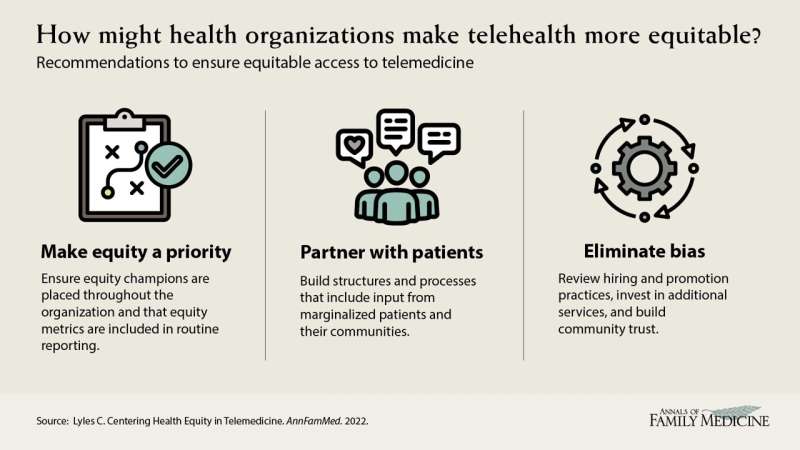How might health organizations make telehealth more equitable? Recommendations to ensure equitable access to telemedicine. Credit: Annals of Family Medicine.
Researchers in San Francisco and New York have proposed a health equity framework to address growing disparities in the uptake of telehealth services across the United States during and after the COVID pandemic.
Using the Institute for Healthcare Improvement as a benchmark, the authors present strategies to advance equity within a healthcare organization across the domains of: 1) making health and racial/ethnic equity in telemedicine a strategic priority, including having committed leaders across the organization and using robust data to identify disparities; 2) building structures and processes to support telemedicine equity, including ensuring more direct input from marginalized patients; 3) deploying telemedicine strategies to address social determinants of health and access barriers to telemedicine; 4) eliminating institutional racism in telemedicine provision, such as hiring and retaining a health care workforce that reflects the diversity of the patients served and; 5) partnering with patients and community organizations to implement telemedicine.
Most importantly, the researchers call for the integration of equity and innovation efforts to ensure all people have access to telemedicine and other digitally enabled health tools.
The research was published in The Annals of Family Medicine.
More information: Courtney R. Lyles et al, Centering Health Equity in Telemedicine, The Annals of Family Medicine (2022). DOI: 10.1370/afm.2823
Journal information: Annals of Family Medicine
Provided by American Academy of Family Physicians
























